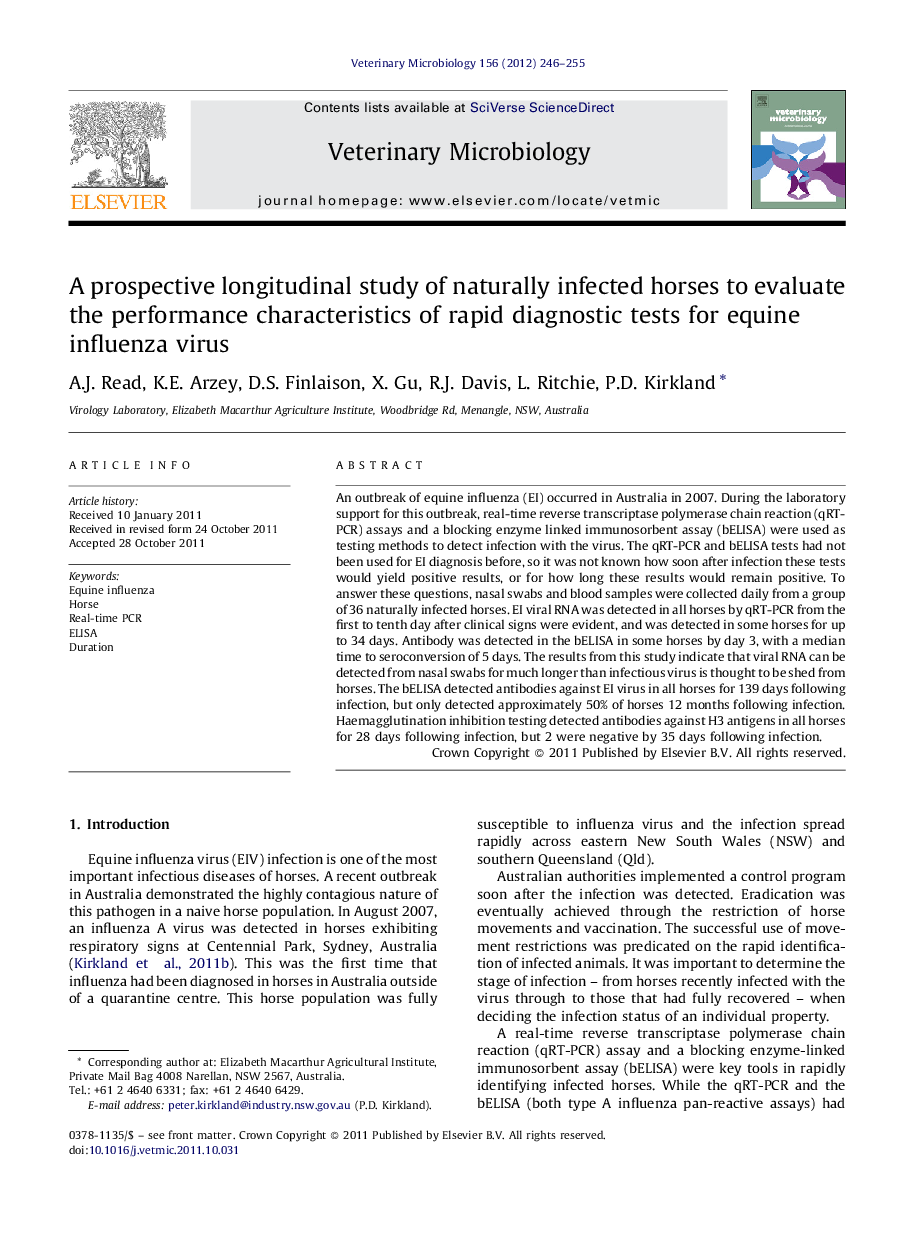| کد مقاله | کد نشریه | سال انتشار | مقاله انگلیسی | نسخه تمام متن |
|---|---|---|---|---|
| 2467315 | 1555389 | 2012 | 10 صفحه PDF | دانلود رایگان |

An outbreak of equine influenza (EI) occurred in Australia in 2007. During the laboratory support for this outbreak, real-time reverse transcriptase polymerase chain reaction (qRT-PCR) assays and a blocking enzyme linked immunosorbent assay (bELISA) were used as testing methods to detect infection with the virus. The qRT-PCR and bELISA tests had not been used for EI diagnosis before, so it was not known how soon after infection these tests would yield positive results, or for how long these results would remain positive. To answer these questions, nasal swabs and blood samples were collected daily from a group of 36 naturally infected horses. EI viral RNA was detected in all horses by qRT-PCR from the first to tenth day after clinical signs were evident, and was detected in some horses for up to 34 days. Antibody was detected in the bELISA in some horses by day 3, with a median time to seroconversion of 5 days. The results from this study indicate that viral RNA can be detected from nasal swabs for much longer than infectious virus is thought to be shed from horses. The bELISA detected antibodies against EI virus in all horses for 139 days following infection, but only detected approximately 50% of horses 12 months following infection. Haemagglutination inhibition testing detected antibodies against H3 antigens in all horses for 28 days following infection, but 2 were negative by 35 days following infection.
Journal: Veterinary Microbiology - Volume 156, Issues 3–4, 4 May 2012, Pages 246–255